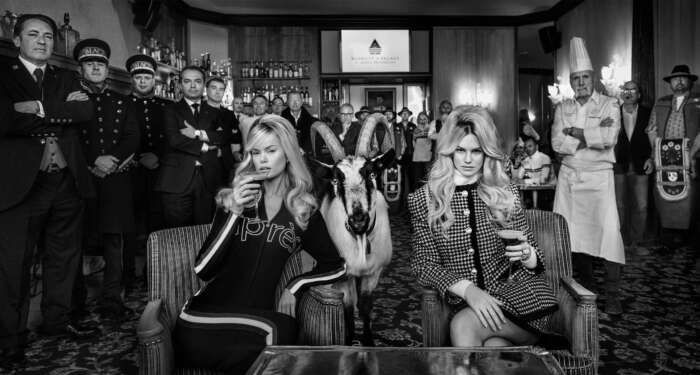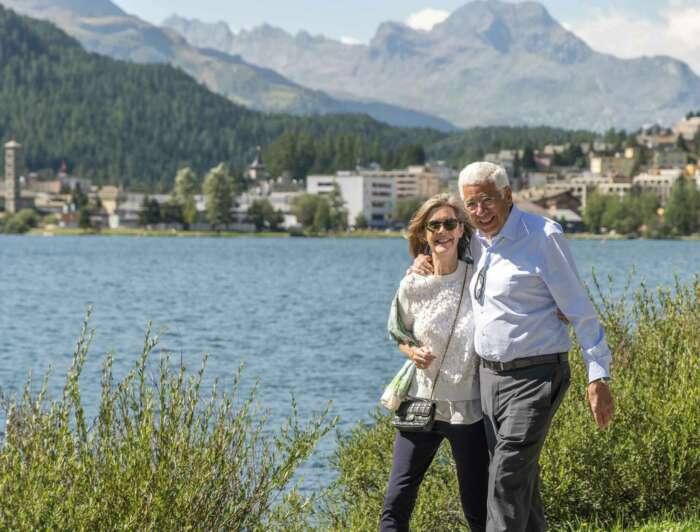As luxury consumers, we have become increasingly conscious about the impact of our purchases. We want to know that what we are buying is a better choice for the planet. The shift towards more responsible consumption is driven by the values and mindset of the new luxury customers: millennials and Gen Z.
These shoppers want to feel a genuine connection with a brand and they make their purchase decisions based on a label’s ethical values. To attract and keep these new consumers engaged, high-end brands are adopting a new set of values, which include greater transparency sustainability and social responsibility.
For shoppers, however, finding out what your latest fashion purchase is made from, who made it and how it arrived in a store can be confusing to say the least. In most instances, you will be hard-pressed to find a simple and easy-to-follow answer in relation to traceability, especially when the fashion industry’s supply chain can be so complex.
While many labels do their best to provide information to consumers, their simplified language can still be confusing. Take the term ‘sustainable’ for instance. This broad term is widely used by many brands but with absent standard and uniform guidelines for the use of this term, it can be interpreted in any number of ways.
But there is one area of fashion rooted in a simple set of principles: circularity. Its three principles, as set out by the Ellen MacArthur Foundation, are to eliminate waste and pollution, to circulate products and materials and to regenerate nature. When integrated at a system and design level, these elements can create significant change for good.
When it comes to having sound circular credentials, Zegna, the Italian menswear brand famed for its beautiful suits, knitwear, outerwear, and footwear, is leading the charge. Founded in 1910 by Ermenegildo Zegna, it is presided over today by third generation Zegna family members.

The path to full traceability
Ever since its inception, the fashion and textile behemoth has been driven by strong guiding principles. Forming part of its Road to Traceability programme, its new fully traceable fibre initiative, Oasi Cashmere, is based on the core belief that the very best garments can only come from the best natural resources and that the best natural resources need to be cared for and traceable. As part of this ongoing strategy, Zegna’s goal is for all cashmere fibres to be fully traceable by 2024.
To ensure even greater authentication, each product throughout the Oasi Cashmere collection – be that a beautiful turtleneck sweater or the deconstructed tailoring and generously cut casual wear that lies at the heart of this family-run company – will carry a unique QR code. This piece of technology follows the thread from the cashmere farm in Mongolia to the high-quality spinner (Tuscany-based Filati Biagioli, which was acquired in 2021 by Zegna and the Prada Group), and finally, the journey to the boutique. The QR code also offers a visual tour of the latest instalment of Oasi Zegna, the give-back-to-nature programme that began in 1993 to conserve the environment and natural resources surrounding Zegna Group’s historical home in the Northern Italian town of Trivero.

Keeping production local
Those in favour of Zegna’s more open and transparent approach to this noble yarn include Madelyn Postman, joint Managing Director of Grain Sustainability, a creative consultancy born out of a mission to help organisations champion people and the planet.
“In fashion, it’s common to have long supply chains with a lot of outsourcing. Zegna is different, however. Their principle of being responsible for people and the environment is showcased in the brand’s vertical integration system,” says Postman. “Keeping production local, particularly among family-owned businesses in Italy, fosters traceability and positions the brand as ethical and sustainable.”
Other industry insiders, such as Joanne Yulan Jong, Founder of Yulan Creative Brand and Sustainability Consultancy, knows well how luxury consumers are willing to pay a premium not just for quality, but for all-important brand integrity.
Jong, who once worked as a womenswear designer for Giorgio Armani in Milan, says: “Zegna’s initiative is a wonderful example of how some brands can harness that closeness, from raw materials to final product, to their advantage. I think consumers believe that because cashmere is such a prestigious luxury yarn it is naturally going to be sustainable but that isn’t always the case due to massive global demand leaving supply chains struggling to keep up.”
With Oasi Cashmere, there is no doubt of Zegna’s intention to become a leader in traceability and accountability. By staying true to its ethos and commitment to communities and the environment, it firmly believes that its actions today will shape its tomorrow. From goat to garment, circularity it seems, is coming in leaps and bounds.

















